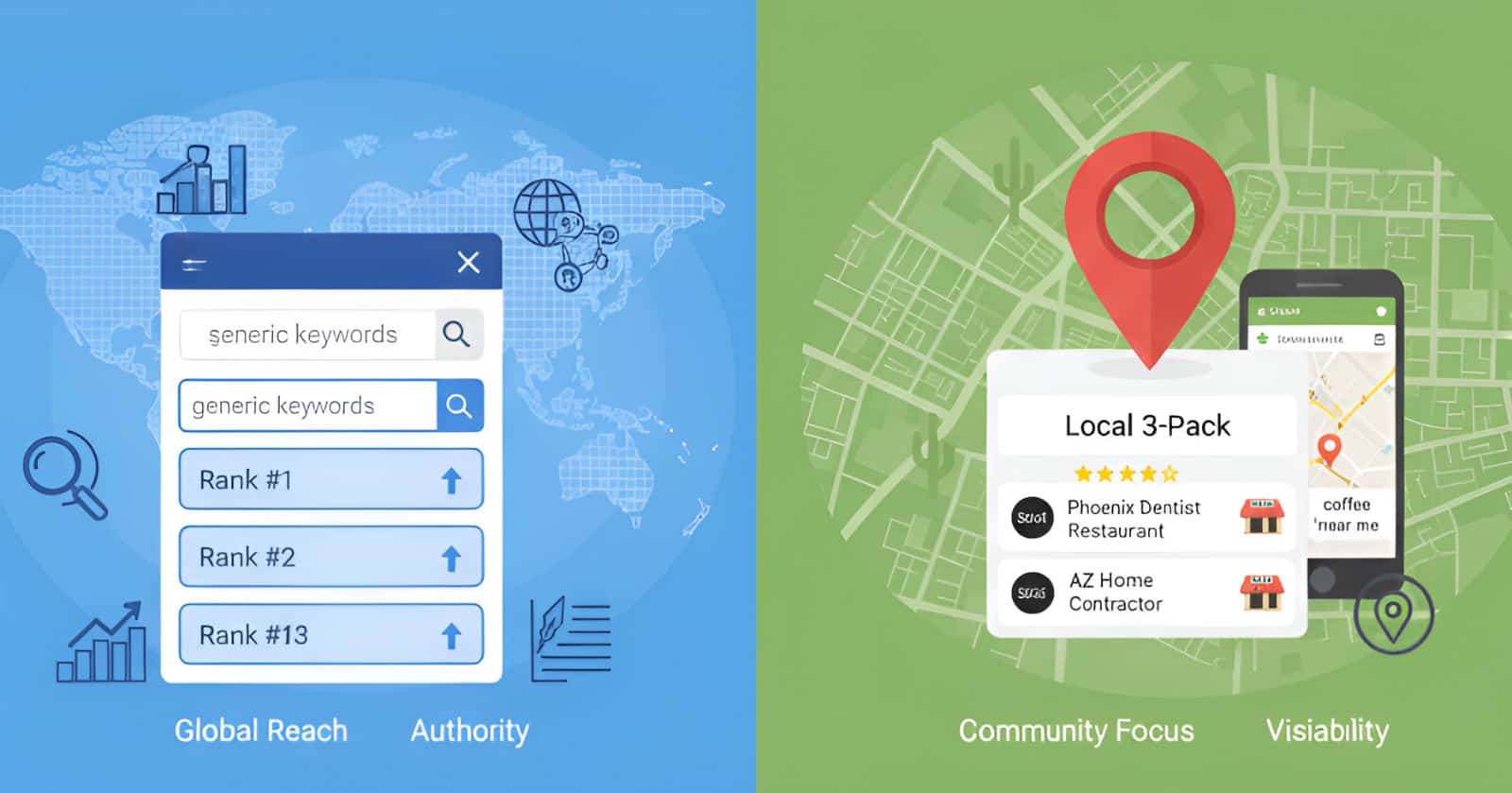If you’ve ever wondered why your business isn’t showing up in local search results — or if you’re unsure what “Local SEO” even means — you’re not alone. Many business owners confuse local SEO with traditional SEO. Although the two are related, they have distinct goals, strategies, and outcomes.
Understanding the difference between them isn’t just marketing trivia; it’s essential for making informed decisions about how to grow your business online. Let’s break it down.
What Is Traditional SEO?
Traditional SEO (Search Engine Optimization) focuses on improving a website’s visibility in organic search results across a national or global scale. The goal is to rank for high-value keywords that drive traffic regardless of the searcher’s location.
Traditional SEO Tactics Include:
- Keyword research and optimization
- Technical SEO (site speed, crawlability, mobile-friendliness)
- Content creation (blogs, pillar pages, guides)
- Link building (getting backlinks from other authoritative sites)
- On-page optimization (meta titles, descriptions, alt text)
This is ideal for eCommerce businesses, SaaS companies, or brands with a national presence.
What Is Local SEO?
Local SEO is designed to increase visibility within a specific geographic area. It’s focused on getting your business in front of people who are physically near you and searching for services you offer.
Local SEO Tactics Include:
- Google Business Profile (formerly Google My Business) optimization
- Local keyword targeting (e.g., “dentist in Mesa AZ”)
- Local citations (business listings in online directories)
- Location-specific content
- Earning positive customer reviews
This approach is essential for small businesses, brick-and-mortar stores, service-area businesses, and professionals such as attorneys, dentists, and HVAC companies.
Key Differences: Local SEO vs. Traditional SEO
| Feature | Traditional SEO | Local SEO |
| Focus | National/Global Rankings | Local/Regional Visibility |
| Search Intent | Informational or Transactional | Local Service or Need-Based |
| Keyword Targeting | Broad, General Terms | Localized Phrases (“near me”, city names) |
| SERP Features | Organic Listings | Map Pack (Google Local 3-Pack) + Organic |
| Key Tools | Google Search Console, Ahrefs | Google Business Profile, Local Directories |
Why Local SEO Matters for Small Businesses
Local SEO is not optional for small businesses — it’s foundational.
- 76% of people who search for something nearby on their smartphone visit a business within a day
- 28% of those searches result in a purchase
- Local SEO helps you compete against larger companies by targeting your neighborhood, not the whole internet.
If your business isn’t optimized for local searches, you’re missing out on customers who are actively ready to buy.
Common Local SEO Mistakes
- Incomplete or inconsistent business listings
- Ignoring Google Business Profile updates
- Few or no online reviews
- Lack of mobile-friendly design
- Not optimizing for voice search (“Where’s the nearest…”)
When You Might Need Both
Some businesses need both local and traditional SEO. For example:
- A local law firm wants to rank for “personal injury lawyer Phoenix” (local) and “what to do after a car accident” (national search intent)
- A regional HVAC company aims to attract traffic from “HVAC service near me” and broader guides, such as “how to choose an energy-efficient AC.”
The good news? The two strategies can complement each other beautifully.
Conclusion
In today’s competitive digital landscape, understanding the differences between local and traditional SEO is key to building an effective online strategy. Local SEO helps small businesses attract nearby customers who are ready to engage, while traditional SEO casts a wider net for broader visibility. By identifying your goals and target audience, you can determine which approach — or combination of both — will deliver the best results for your business.

